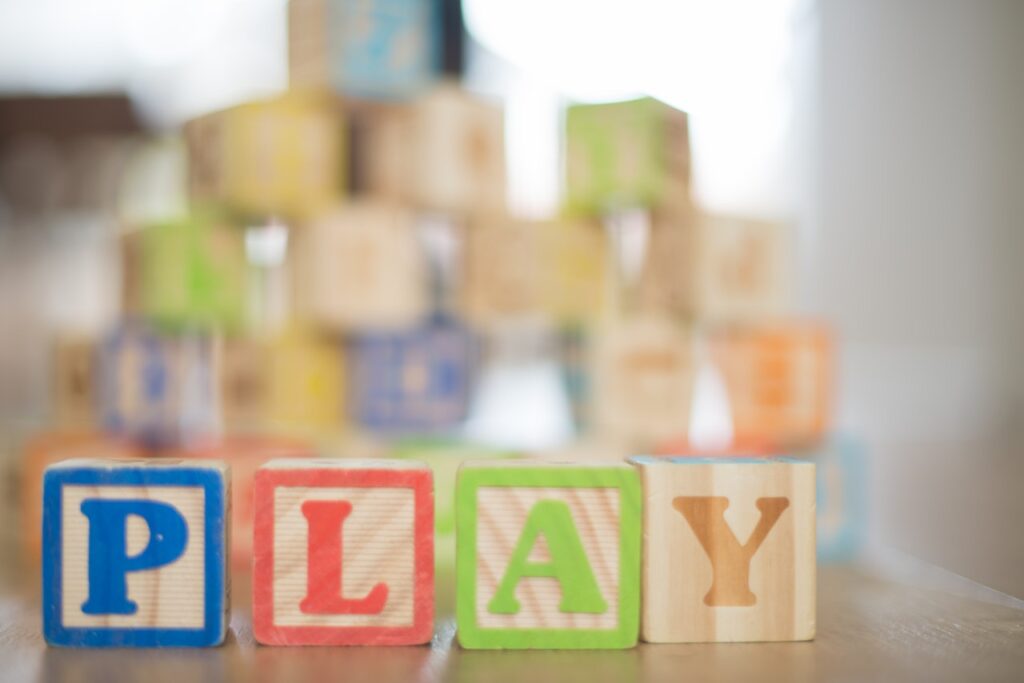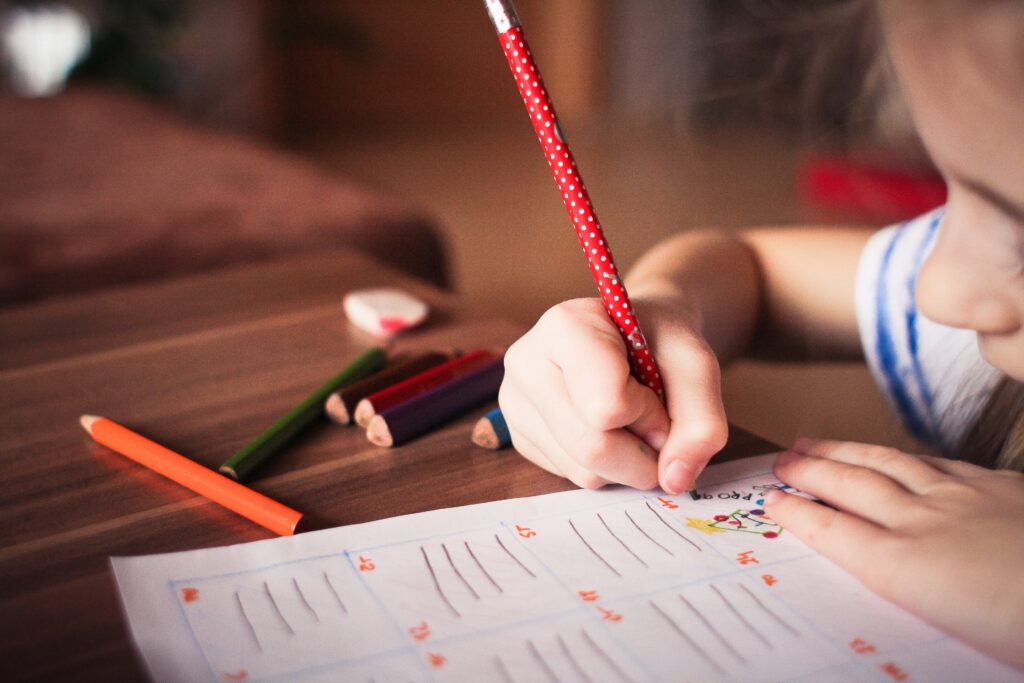The Learning Garden Curriculum


Twos Program - Becoming Independent Learners
For an enthusiastic, energetic 2-year-old, the whole world is a playground. Our unique educational approach channels that enthusiasm into chances to grow, learn, build independence, and ultimately, achieve success. At TLG, 2-year-olds enjoy:
- Exclusive curriculum for milestone development
- Interactive, hands-on learning experiences
- Variety of tactile learning material
In this immersive classroom environment, children have space to move and excel while they make educational discoveries and build the foundation of future success. Children will stay busy and engaged in our six distinct classroom areas.
- Movement & Music Center: In this safe environment children can jump, dance, and build gross motor skills.
- Blocks & Math Center: Blocks, trucks, and puzzles allow children to use their hands to experiment with objects and find new ways to do things.
- Art & Science Center: Children have the opportunity to explore ideas and express themselves by using art supplies, observation tools, and sensory materials (fabric, sand, water, etc.).
- Pretend Center: Make-believe play comes to life as children use dress-up materials and clothes, accessories, furniture, and housekeeping items to expand their imaginations.
- Language & Literacy Center: This cozy classroom area gives children an inviting place for reading, playing with puppets, and exploring early writing.
- “My Space”: Every so often, children can spend a little time in an area where they can relax and have a quiet moment, as need be.
Golds Teaching Strategies observation-based assessment and objectives defines the core learning experiences while continuing to guide milestone achievement. We deal with the specifics needs of this very mobile age group while continuing to focus on five key developmental areas.
- Approaches to Learning: Becoming independent through exploration of their surroundings, while developing problem-solving abilities.
- Cognitive Development: Gaining an understanding of the world around them while they develop creativity and critical thinking skills.
- Language Development: Through sounds, expressions, body language, and oral and written language, children strengthen their ability to communicate and practice responding to and understanding others.
- Physical Development: Developing coordination and large and small muscle control; learning about health and safety concepts.
- Social-Emotional Development: Building emotional understanding to deal with their own emotions and relationships with others, like family, friends, and people in the community; practicing interacting with others while developing self-awareness.
Preschool - The Journey to Kindergarten Readiness
Future academic success is a journey—Preschool is an essential part of that path to elementary school for active learners. Hands-on early childhood learning experiences allow children to practice and develop key skills. This program focuses on:
- Encouraging independence
- Cooperating and communicating
- Hands-on learning
- Literacy and number concepts
Children have the opportunity to develop skills across a variety of disciplines in our eight dynamic learning centers.
- Music & Movement Center: As they cooperate and communicate with others, children build physical coordination skills through movement, dance, and song.
- Math Center: Early math concepts like number organization, counting and comparing, sorting, and ordering give children a chance to explore new ideas.
- Art Center: In this creative setting, children explore new art techniques, concepts of color, and cooperating with classmates.
- Dramatic Play Center: Children learn to express their emotions and make sense of the world around them through imaginative play that will enhance their early writing and reading skills.
- Block Center: Working with different materials helps children develop hand-eye coordination while they learn to sort, count, and pattern items.
- Science Center: Through the exploration of plants, animals, weather, seasons, and other science areas, children are enabled to build observational and questioning skills.
- Writing Center: Early writing skills, in addition to essential communication, are developed through the exploration of rhymes and sounds, letter recognition and formation.
- Reading Center: Children build literacy skills in this center while they achieve milestones such as print awareness, story comprehension, and listening.
Gold Teaching Strategies Objectives bases the teachers’ observation and assessment of children so that they can achieve milestones across 10
developmental scales.
- Approaches to Learning: Measure children’s ability to set goals, make plans, interact with others, and interact with the environment.
- Creative Arts: Measure the ability to express ideas and feelings through music, movement, visual arts, and drama.
- Language: Measuring expressive vocabulary, receptive vocabulary, and using their vocabulary and conversation skills for effective communication.
- Literacy: Measuring alphabet knowledge, reading and writing skills and comprehension, as well as phonological awareness.
- Logic & Reasoning: Measuring sequencing, problem-solving, and symbolic and critical-thinking abilities.
- Early Math: Measuring the ability to comprehend numbers, patterns, sorting, and ordering, while using numbers for addition, subtraction, measurement, and graphing.
- Nature & Science: Measuring understanding of the natural and physical world, as well as observation, descriptive, prediction, and data-gathering abilities.
- Social Studies: Measuring children’s ability for self-awareness, as well as their ability to understand their families, their community, and their world.
- Physical Development/Health: Measuring motor skills, both fine and gross, in addition to understanding health and nutrition.
- Social-Emotional Development: Measuring self-awareness, plus the ability to show respect and empathy for others.
Pre-Kindergarten - A Foundation for Success
Pre-K is a vital part of the journey to success in kindergarten. Through a combination of independent and group work, we guarantee that children make developmental leaps and bounds, learn to communicate effectively, and become better collaborators. The TLG Pre-K program explores:
- Problem-solving
- Responsive listening
- Using language to learn
- Social and collaborative skills
Children have the opportunity to develop skills across a variety of disciplines in our eight dynamic learning centers.
- Music & Movement Center: Children strengthen physical coordination abilities by moving, dancing, and singing in cooperation and communication with their classmates.
- Math Center: By organizing, counting, comparing, and sorting numbers, children explore new ideas and foundational early math concepts.
- Art Center: This creative center gives children an environment that encourages discoveries like new art techniques and concepts of color.
- Dramatic Play Center: Emotional expression is demonstrated in this area, where children use their imaginations to make sense of the world in a way that enhances early writing and reading abilities.
- Block Center: By exploring different materials, children fine-tune their hand-eye coordination as they sort, count, and pattern items.
- Science Center: Children enhance their classification, analytic, prediction, and experimentation skills as they learn about animal and plant life cycles and other physical and earth science concepts.
- Writing Center: Letter and word recognition and formation, along with segmenting words into sounds, and putting new sounds together to make words, allow children to succeed at written communication.
- Reading Center: Children continue to build literacy skills here while they sharpen their print awareness, story comprehension, and listening abilities.
Gold Teaching Strategies Objectives are based on the teachers’ observation and assessment of children, so that they can achieve and exceed milestones across 10 developmental scales.
- Approaches to Learning: Measuring children’s abilities to make plans, interact with others as well as the environment, and set goals.
- Creative Arts: Measuring children’s ability to express themselves and their feelings through movement, music, drama, and visual arts.
- Language: Measuring children’s expressive and receptive vocabulary, in addition to their ability to use their vocabulary in conversation for effective communication.
- Literacy: Measuring children’s knowledge of the alphabet, their ability to read and write, and their comprehension and phonological awareness.
- Logic & Reasoning: Measuring children’s ability to sequence, solve problems, and think critically and symbolically.
- Early Math: Measure the ability to comprehend numbers, patterns, sorting, and ordering, while using numbers for addition, subtraction, measurement, and graphing.
- Nature & Science: Measuring children’s understanding of the natural and physical world, in addition to their ability to observe, describe, predict, and gather data.
- Social Studies: Measuring children’s ability for self-awareness, as well as their ability to understand their families, their community, and their world.
- Physical Development/Health: Measuring fine and gross motor skills, as well as children’s ability to understand health and nutrition.
- Social-Emotional Development: Measure children’s awareness of themselves, and their ability to show respect and empathy toward others.

